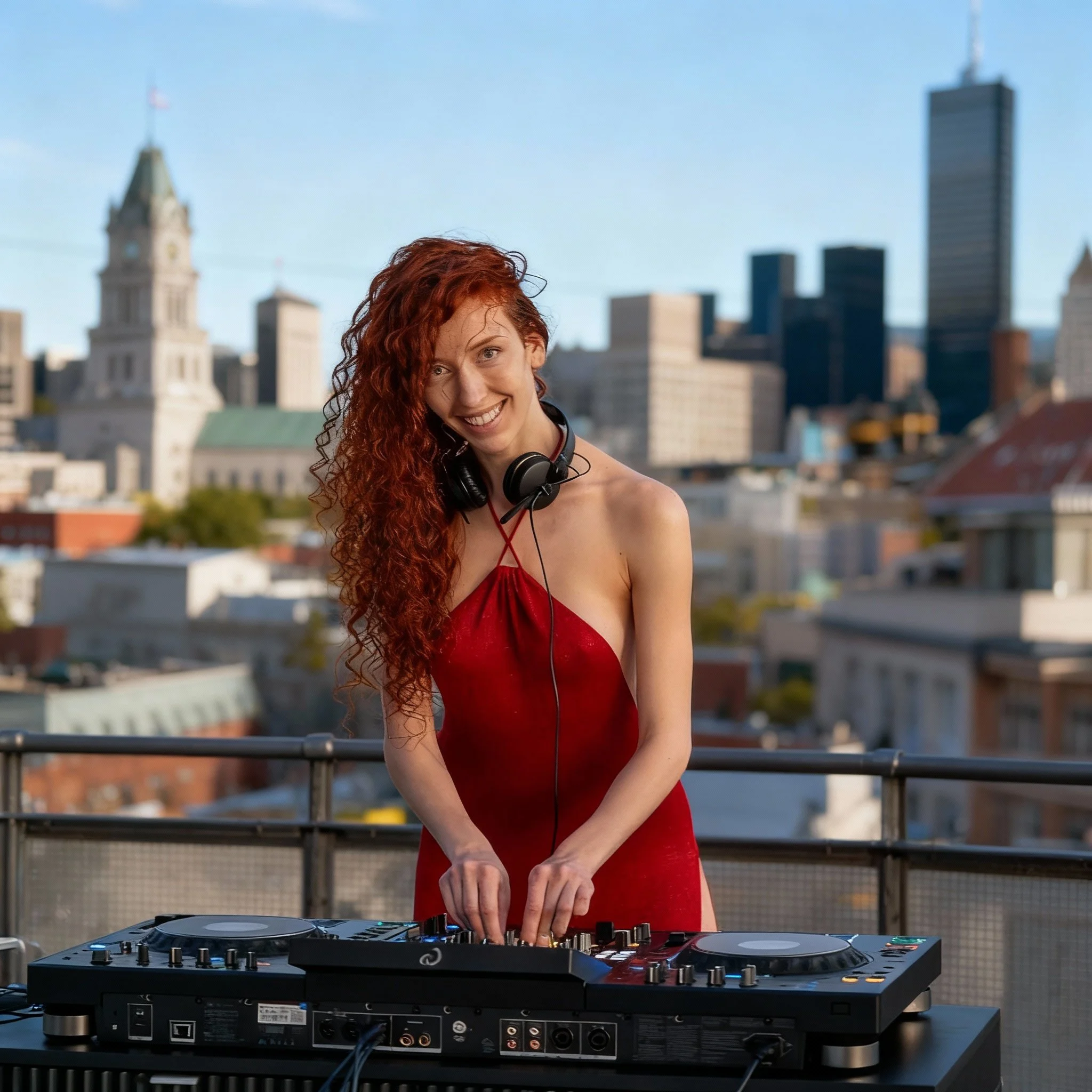Photographic Pilgrimage
Feet, Film & Fall Foliage: A Gentleman’s Unplanned Photographic Pilgrimage Through Montreal, Quebec, and Ottawa
Prelude: The Romance of Overpacking
There’s a particular kind of optimism that grips photographers before a trip — a delusional belief that *this time*, we’ll travel light.
That optimism lasted precisely until I started packing for my Canadian autumn escape.
Within minutes, the bed resembled a crime scene from a film called *The Man Who Carried Too Much Gear*. There lay the **Leica M6** (because stealth matters), the **Hasselblad 500 C/M** (because ritual matters more), and the **907x with digital back** (because technology can’t be entirely ignored, even when pretending to be analogly pure).
Six film rolls, a light meter I never use, filters I don’t understand, and a travel tripod that somehow weighs more than regret. I stuffed everything into a backpack and told myself this would be *a photographic pilgrimage by foot*. In reality, it was an elaborate urban endurance test, masquerading as art.
Autumn in Canada — the golden cliché of every photographer. But clichés exist for a reason: they’re true, they need better timing and shoes.
Montreal: Where the Streets Speak Jazz
Montreal greeted me with the smoky aroma of bagels and the sound of bilingual jazz — phrases that began in French and ended in English with a shrug. It’s a city that wears contradiction like perfume: old façades, new ideas, and people who look like they’ve read Camus *and* danced to Daft Punk before breakfast.
I started my walk along **Rue Saint-Denis**, Leica dangling from my neck in that casually conspicuous way photographers believe makes them look local. The first thing I noticed wasn’t the architecture or the light — it was the rhythm. Montreal moves like syncopation: stop, sway, stride, stop. Even the traffic lights seem to pause artistically.
At a café, I sat by the window, pretending to review photos while secretly recovering from my first kilometer. The Leica performed flawlessly — or perhaps Montreal did. Every scene looked composed: a man with a cigarette framed by graffiti, a cyclist slicing through a puddle, a cat watching from a balcony as if judging composition.
When I shot film here, time seemed to slow down. I advanced the lever, looked through the rangefinder, and waited — not for perfection, but for permission from the city.
### *Street Photography Tip #1: Blend in, but never vanish.*
Montreal rewards curiosity. Be visible enough to catch reactions, but not so obvious that you become a part of them. And if you must crouch for a low-angle shot, make it look intentional — not orthopedic.
That night, I wandered into **Le Plateau**, where every lamppost looked designed for melancholy. A jazz trio played in a bar doorway; the trumpeter winked at me mid-note as if to say, *You’re photographing life, I’m living it — let’s call it even.*
The Leica’s shutter whispered through the music. The frame caught nothing spectacular — just warmth, rhythm, and one city’s quiet acceptance of autumn.
Old Montreal: The Facade of Time
The next morning, I strolled through **Old Montreal**, cobblestones clicking under my boots, the 500 C/M swinging like a brass pendulum. Here, even decay looks curated.
Old warehouses, now galleries. Stone alleys with shadows you could measure time by—the light — low, honeyed, theatrical. I set up near **Place d’Armes**, metered with unnecessary precision, then ignored the reading altogether.
Every time I raised the Hasselblad, someone stopped to comment:
“Whoa, is that a movie camera?”
“No,” I replied, “it’s a Swedish reminder that time used to move more slowly.”
Montrealers were kind, curious, and fluent in nostalgia. They respected the ritual of waiting for the right frame. One old man even stood still mid-walk, whispering, “Take your time — that light’s about to turn saintly.” He was right.
### *Street Photography Tip #2: Wait for the hesitation.*
In busy cities, beauty lives in pauses — a foot mid-step, a glance mid-thought, a cloud mid-change. Capture hesitation; it’s the heartbeat of the street.
By evening, my legs ached, my film rolls felt heavier, and my confidence lighter. But as I looked across the St. Lawrence River — bridge lights flickering like Morse code — I knew Montreal had given me its rhythm.
It was time to chase color in an older place.
Quebec City: The Postcard and the Paradox
Arriving in Quebec City feels like entering a painting — and realizing the artist was slightly intoxicated by the autumn light. The old town, perched on cliffs above the St. Lawrence, glows with defiance. It refuses to age; it just patinas.
The first thing I did, naturally, was get lost. Cobblestones, alleys, staircases that double back on themselves, and signs that appear to mock your sense of direction in two languages.
Every corner seemed designed for medium format. The **Hasselblad 500 C/M** came alive here, its mirror slap echoing through history like a polite cannon.
I set up near **Château Frontenac**, trying to frame tourists without admitting it. Every time I clicked, a horse-drawn carriage photobombed like clockwork.
I thought: *This city doesn’t want perfection. It wants participation.*
Later, in **Petit-Champlain**, I found a café so quaint it could have been built by nostalgia itself. I ordered an espresso that tasted like penance and loaded another roll of Portra. The waitress asked why I didn’t use a phone.
“Phones make sense,” I said. “I’m allergic to efficiency.”
She nodded sympathetically.
Street Photography Tip #3: Film loves friction.
Let your equipment slow you down. Every delay — winding film, focusing manually — lets the world breathe. The slower you shoot, the quicker you see.
As dusk fell, I climbed the **Citadel Hill** to photograph the sunset. The river shimmered in molten copper; the trees performed their final color symphony. For a moment, I believed in magic — until I realized I’d left my light meter in a bakery.
So I guessed the exposure. It worked.
Ottawa: Bureaucracy in Beautiful Light
If Montreal is rhythm and Quebec is romance, Ottawa is restraint — the polite cousin who ironed its autumn leaves before displaying them.
The air smelled of damp stone and ambition. I started at **Parliament Hill**, where the architecture resembles someone translating Westminster into Canadian and adding better manners.
The **907x** came into play — sleek, silent, too clean for its surroundings—digital purity amid Gothic pride. I shot Parliament in golden light, trying to make bureaucracy look poetic. It worked until a goose attacked my tripod.
Ottawa’s citizens, I discovered, are either in government or in training for it. They walk briskly and efficiently, with a purpose that confuses photographers. Still, the city rewards those who slow down. The **Rideau Canal**, lined with crimson maples, turned every reflection into a Monet accident.
I shot reflections, ripples, and my own shadow in passing glass. A civil servant stopped to ask, “Are you shooting architecture or feelings?”
“Yes,” I replied.
Street Photography Tip #4: Look down.
Water, windows, shadows — they reveal stories the skyline hides. Ottawa’s reflections are more accurate than its monuments.
At sunset, I wandered toward **ByWard Market**, where the city finally loosened its tie. Street musicians played blues, tourists sampled beaver tails (the pastry, not the mammal, though the distinction deserves emphasis).
I photographed light spilling over maple syrup jars — a perfect metaphor for Canada: sweetness in structure.
Between Cities: The Long Walk of Realization
Trains between Canadian cities are meditative — long enough to rethink your life, short enough to avoid enlightenment. I reviewed my images and selected 38 keepers out of hundreds. Not bad, for a film.
Some were sharp, some weren’t. Some captured truth, others invented it. But all of them shared one thing: *distance collapsed by walking.*
Photography on foot teaches humility. You can’t outrun bad light or shortcut good timing. You move — one step, one frame, one fall leaf at a time.
I realized that walking wasn’t a means to take photographs; taking photographs was an excuse to walk.
The Cameras, The Quarrel, The Quiet
One rainy morning in Ottawa, I held a roundtable discussion between myself and my cameras.
**Leica:** “I capture what’s real.”
**Hasselblad:** “I capture what’s eternal.”
**907x:** “I capture what’s marketable.”
They bickered about depth, philosophy, and megapixels until I interrupted:
“Gentlemen, you all weigh too much.”
Yet each had taught me something.
The **Leica** — spontaneity and honesty.
The **500 C/M** — patience and reverence.
The **907x** — flexibility and denial.
But the true teacher was the act of *seeing* — stripped of expectation, framed by movement.
The Light and the Laugh
Canadian autumn light behaves like an indecisive artist: brilliant, fleeting, unpredictable.
In Montreal, it danced.
In Quebec, it glowed.
In Ottawa, it negotiated.
I found myself chasing it through puddles, alleys, bus stops — moments that meant nothing and everything.
And then there was the laughter. The quiet, private chuckle every photographer knows when they miss the shot but gain the story. Like the time I tripped over a curb mid-focus, exposing my film and my dignity. Or when a bus driver in Quebec honked just as I clicked, gifting me an accidental masterpiece of motion blur and fear.
Photography, I’ve decided, is comedy in slow motion. Every frame is a punchline the universe delivers after your best preparation fails.
Street Photography Philosophy (Inconveniently Learned by Blisters)
1. **Walk without a destination.**
The best images often occur when you're lost. Plan routes, then ignore them.
2. **Trust bad weather.**
Rain turns reflections into revelations. Umbrellas create geometry.
3. **Ask, don’t steal.**
People respond better to curiosity than stealth. A smile is faster than autofocus.
4. **Edit like a monk.**
The delete key is your modern darkroom. Mercy ruins portfolios.
5. **Remember the absurdity.**
You’re pointing a box at the light, trying to stop time. It’s ridiculous — and beautiful.
The Footnote of Gratitude
By my last day in Ottawa, my shoes looked like veterans of several lifetimes. I’d walked through languages, histories, and leaves that deserved their own Pantone book.
I sat on a bench overlooking the **Ottawa River**, sipping coffee that was more existential than enjoyable, and reflected on the pilgrimage.
What had I captured?
Not cities, but transitions. Not people, but gestures. Not autumn, but the beautiful inevitability of change.
Photography, I realized, isn’t about freezing life — it’s about acknowledging its movement and daring to walk within it.
Epilogue: The Last Frame
At the airport, waiting for my flight, I aimed the Leica at my coffee cup. The light was flat; my hands were tired, and my focus was imperfect.
Click.
That image became my favorite of the trip — not because it was beautiful, but because it was honest.
Traveling through Montreal, Quebec, and Ottawa had been less about photographs and more about perception — seeing the comedy in grandeur, the poetry in bureaucracy, and the beauty in blisters.
So here’s my final advice:
Carry fewer lenses, walk more, expect less.
Autumn doesn’t repeat itself, but it rewards those who look slowly.
Because in the end, **it’s not the shot you take — it’s the walk that takes you.**









